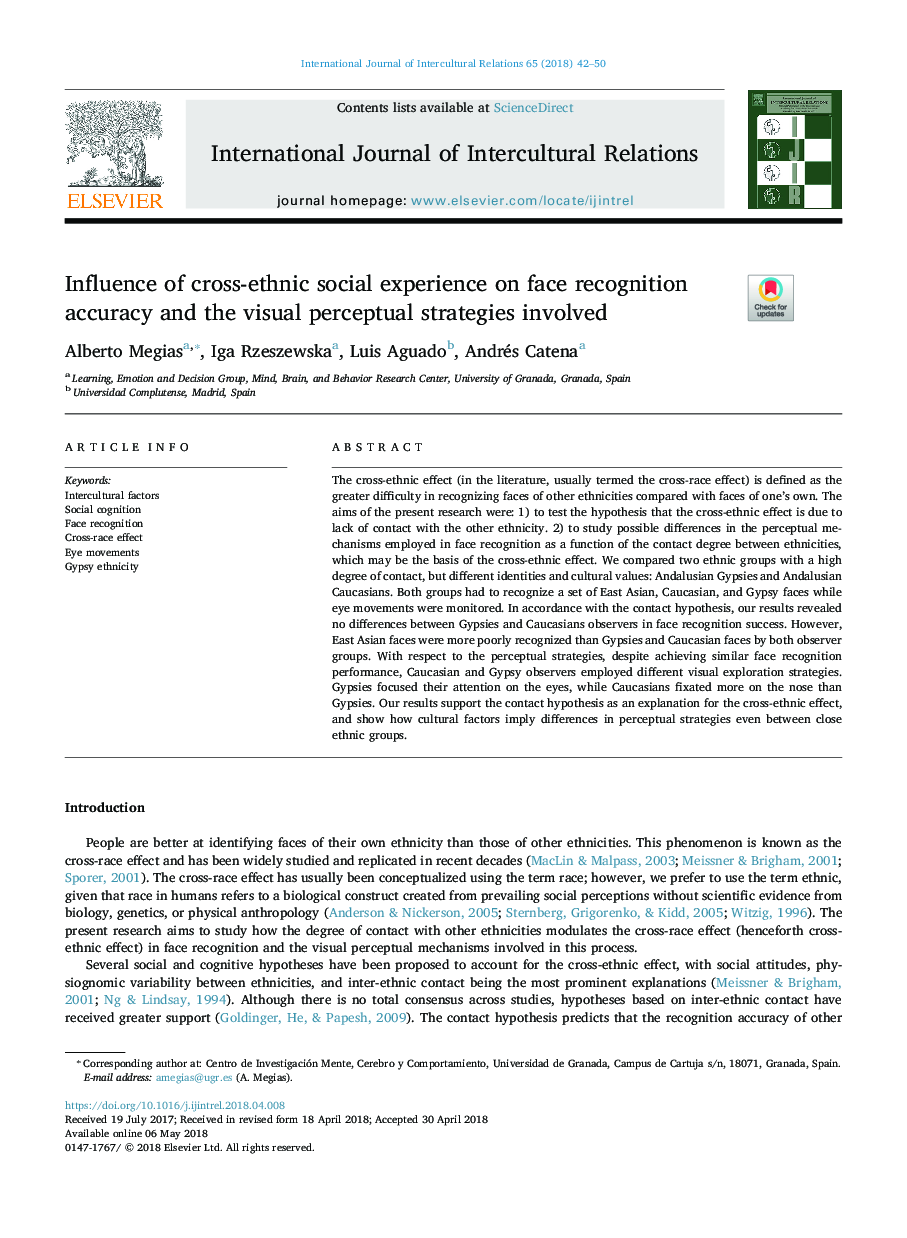| Article ID | Journal | Published Year | Pages | File Type |
|---|---|---|---|---|
| 7323604 | International Journal of Intercultural Relations | 2018 | 9 Pages |
Abstract
The cross-ethnic effect (in the literature, usually termed the cross-race effect) is defined as the greater difficulty in recognizing faces of other ethnicities compared with faces of one's own. The aims of the present research were: 1) to test the hypothesis that the cross-ethnic effect is due to lack of contact with the other ethnicity. 2) to study possible differences in the perceptual mechanisms employed in face recognition as a function of the contact degree between ethnicities, which may be the basis of the cross-ethnic effect. We compared two ethnic groups with a high degree of contact, but different identities and cultural values: Andalusian Gypsies and Andalusian Caucasians. Both groups had to recognize a set of East Asian, Caucasian, and Gypsy faces while eye movements were monitored. In accordance with the contact hypothesis, our results revealed no differences between Gypsies and Caucasians observers in face recognition success. However, East Asian faces were more poorly recognized than Gypsies and Caucasian faces by both observer groups. With respect to the perceptual strategies, despite achieving similar face recognition performance, Caucasian and Gypsy observers employed different visual exploration strategies. Gypsies focused their attention on the eyes, while Caucasians fixated more on the nose than Gypsies. Our results support the contact hypothesis as an explanation for the cross-ethnic effect, and show how cultural factors imply differences in perceptual strategies even between close ethnic groups.
Related Topics
Social Sciences and Humanities
Business, Management and Accounting
Business and International Management
Authors
Alberto Megias, Iga Rzeszewska, Luis Aguado, Andrés Catena,
